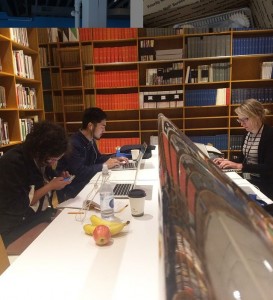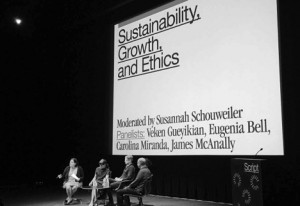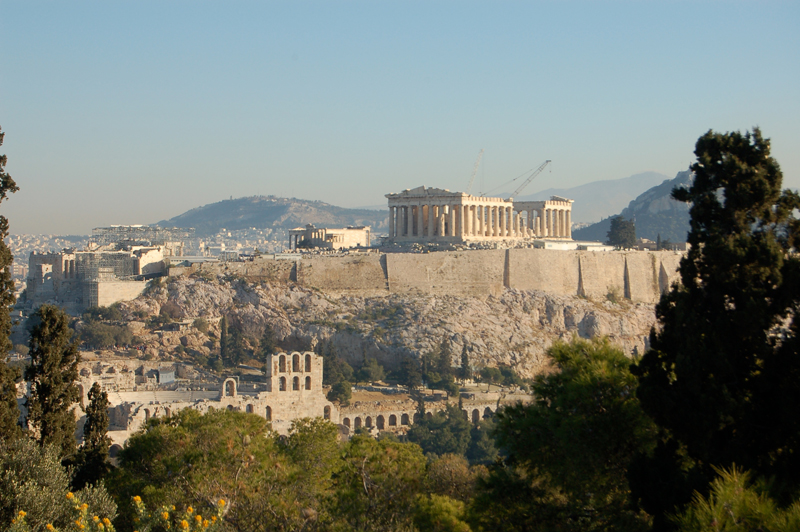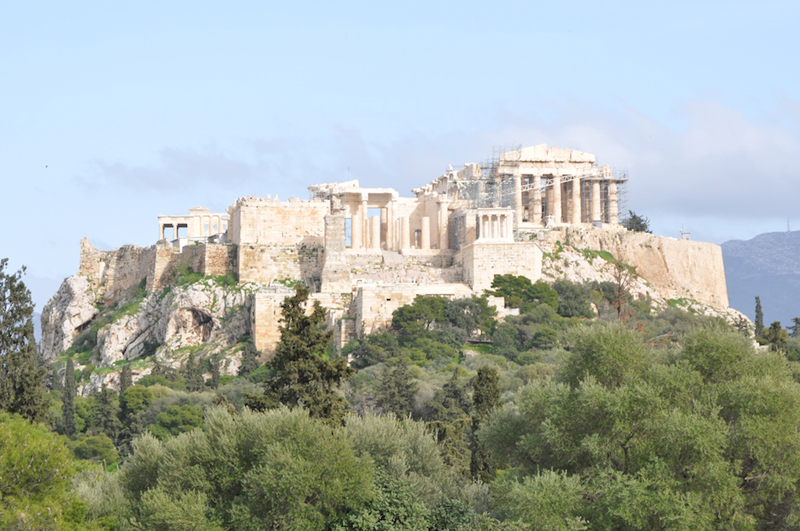Sam Wisneski is an art history graduate student, entering her second year in the program. She was recently selected to participate in the first-ever Hyperallergic/Walker Art Center blog mentorship program at the Superscript Conference held May 29-30, 2015.
This might just be the most meta thing you will ever read: a blog post about blogging/writing about a conference about writing.
As an undergraduate student at St. Thomas, I studied Communication and Journalism and Art History, and more than once, I Googled “how to become an art critic,” but never seriously considered it a career option. It seemed like a natural, but unlikely marriage of my majors, given the state of the profession. I did not start thinking about criticism as a career path again until I learned about Superscript, a first-of-its-kind conference about arts journalism and criticism in a digital age at the Walker Art Center – and it wasn’t until I was selected for the inaugural Hyperallergic/Walker Art Center blog mentorship program that I really, seriously started considering what it would mean to become a critic or arts writer.
The Blog Mentorship Program
The purpose the Superscript Conference was to bring together minds from all over the world of arts writing – Buzzfeed Books, The New Inquiry, Frieze, Terraform, Design Observer, Hyperallergic, just to name a few of the varied publications. The blog mentorship program was formed to provide live responses to the conference for publication on Walker and Mn Artists media channels, and to pair wannabe writers with seasoned, world-class arts editors, including Jillian Steinhauer, senior editor of Hyperallergic, Nicole Caruth, former editorial manager at Art21 and founding editor of Art21 Magazine, and Isla Leaver-Yap, the Walker Art Center Benston Film Scholar.
The Enterprising Trio of Mentees
I was in great company for Superscript weekend. My fellow bloggers included the delightful, stylish and brash Merray Gerges, a graduate of the Nova Scotia School of Art and Design (NSCAD) and founder of CRIT, a quarterly newspaper, based in Halifax, and the equally stylish, quick-witted, Haiku-master, Ryohei Ozaki, a Princeton grad who hails from New York and former editor of The Princeton Buffer. (You can read all of the bloggers’ content on the sidebar of the Superscript Reader.)
Our first evening together was a whirlwind – foreshadowing what was to come the following days. We devised a tentative approach to who would cover what over dinner and drinks, and then set off to the Walker for its Thursday night program, Everyone’s a Critic, where we rubbed elbows with writers and other arts professionals.
The Conference
The first day of the conference, Merray covered the opening panel while Ryohei and I hunkered down in the Walker library, devising our first posts. I covered the second panel, “Sustainability, Growth and Ethics,” which was illuminating, disheartening and inspiring all at once. I left with no illusions about writer pay. I learned that advocating for yourself, especially as a woman, is paramount for survival as a writer, and that pay, is indeed “universally paltry,” a vow of poverty, even. Still, the discussion left something to be desired, particularly in relation to emerging writers, which I wrote about for Mn Artists.
My next assignment was to interview keynote speaker and London-based artist James Bridle, who was elusive the first day of the conference. Moments after I went to bed Friday, I received an email, firming up the plans to interview James. The first hour of my Saturday morning was a frantic cram to better familiarize myself with his work, as I did not want to look like an uncultured or entitled knob when interviewing him.
I hastily crafted an email, trying to reach James, realizing I’d probably have to track him down in person, as he was likely writing a keynote or actually attending the Superscript panels – something I didn’t actually get to do as much of as I’d like, since I was hacking away at blog posts in our makeshift “pop-up” newsroom.
So, after the first panel on Saturday, I set out to find James, with the help of Merray, who had seen him milling about. I (nervously) ambushed him for a quick interview, for which he graciously obliged, as it meant stealing him away from a conversation with someone he must have known well based on their farewell kiss-on-the-cheek (but maybe British people do that to everyone…?)
We chatted about the New Aesthetic, his newest project, Citizen-Ex, and what he would be talking about at Superscript…and it actually was totally great and super chill. I’ve interviewed people in the past, sure, but, you know, there are pretenses about artists (and British people) and I also find his work really compelling, especially as someone with newly-discovered interests in new media, code, and what we might call “artist activism” which James would probably just call “art.” In short, I was equal parts excited and equal parts freaked out to interview him, and it went swimmingly. I might actually summarize my entire Superscript experience this way…waves of childlike, giddy excitement, punctuated by the anxiety and dread of looming deadlines.
The Aftermath
That was my last blogging assignment for the #Superscript15 weekend. Then, it was on to my post for Hyperallergic, where I provided suggestions for Superscript 2.0. And then Superscript IRL was over – though it lives in on in the form of blog posts, hashtags, and archived video footage, which its creators, Paul Schmelzer and Susannah Schouweiler (both splendid, visionary people) hope to build from in the future.
Superscript was thrilling, overwhelming, inspiring and exhausting – and I imagine it is a lot like what the life of an art writer might feel like. The blog mentorship program rattled me out of the slower, deliberate pace of academic writing, and into a whole new mode of challenging but rewarding reflection. While I revel in a slower pace of writing, I am also hoping to wear the hat of critic-on-the-side moving forward.



